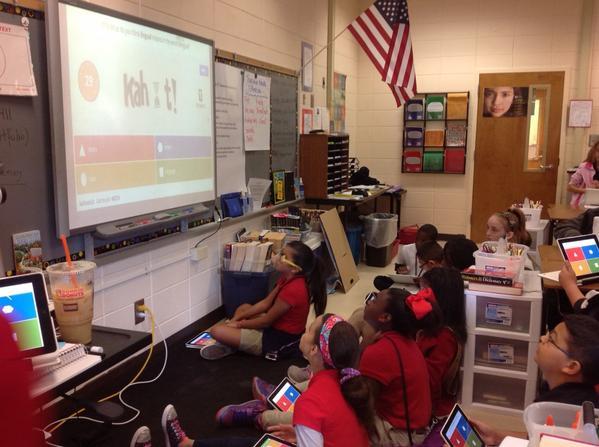
(Picture credit: @Mr_D_Reeves)
As a teacher, have you ever wondered what creates that spark of magic in the classroom when Kahoot! is being played? Have you witnessed your students looking up and around in excited anticipation to see who has selected the correct answer? The noise levels suddenly shoot up and in those moments everyone is unified in a playful group dynamic. One of the reasons for this is that the players must focus on the environment around them rather than staring down at their individual device screens.
Our team are often asked why questions and answers don’t appear on the students devices whilst playing a game. While other in-class learning platforms show questions and answers on students’ devices, the research carried out at the Norwegian University of Technology & Science surmised that Kahoot! is so effective because of it’s collaborative nature, confirming that group play isn’t only fun – but smart! the unique experience Kahoot! creates within classrooms diminished the moment a student wasn’t required to look up and away from their personal device. What’s known as the “Blackberry prayer” (when a person is fixated on their own device, oblivious to what’s happening around them) is something we absolutely want to avoid.

(Picture credit: @pmcgonagle_JME)
Kahoot!’s open and accessible learning platform encourages students to communicate and engage in conversation with their classmates around the educational content they are playing – because they are forced to look up to the questions and answers displayed at the front.
However, we always feel our users say it better than us! Stephanie Castle, a science teacher at United Nations International School who did her master’s research on the use of mobile devices in teaching, said she’s an early adopter and had tried a number of different tools to create engagement, but “Kahoot! pretty much wiped them all away.”
“This is the only one that has come close to eliciting this level of enthusiasm,” Castle said. “Others created some energy but they didn’t feel social in any sense…. This makes the kids look up and look out…. the smart phone just becomes the tool – it doesn’t become the object of attention.”
For more community insights check out this article from Stephani Itibrout:
“The interesting part about this game is that the answer choices do not appear on the students’ devices; they must look at the main screen to access the questions and the choices. This creates a group dynamic that is often missing when students use their devices for quizzes. Students must focus on one point together rather than look down at their screens individually. To reinforce this group dynamic, Kahoot flashes a leader board after every question. Students get points for the correct answer and for speed.”
Fun is fundamental to developing great minds, and great minds work better together.
For more insights into the research that has gone into Kahoot!, please read these articles:
Results from using various quiz-approaches in class
Short term vs. long term effects of using Kahoot! in lectures




